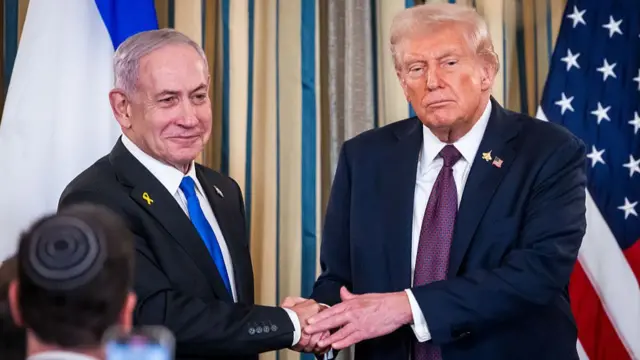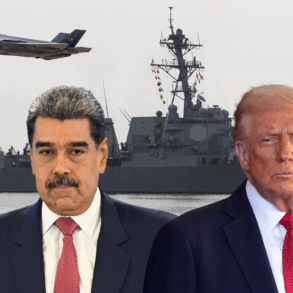On October 3, 2025, Hamas announced it would conditionally accept a ceasefire proposal put forward by U.S. President Donald Trump to end the two-year conflict in Gaza, which began after Hamas’s attack on Israel on October 7, 2023. The conflict has left much of Gaza in ruins and resulted in significant loss of life, with at least 66,288 Palestinians reported killed by Israeli military actions, according to Gaza’s Hamas-run health ministry. The Trump plan aims to secure the release of Israeli hostages still held in Gaza and bring an end to the fighting, but Hamas’s acceptance comes with demands that could complicate negotiations.
Trump’s 20-Point Peace Plan
The 20-point peace plan, unveiled by Trump on Monday, October 1, 2025, calls for an immediate ceasefire and the release of 20 living Israeli hostages, along with the remains of those believed dead, within 72 hours. In exchange, hundreds of detained Gazans would be freed, and full humanitarian aid would be sent to Gaza. The plan also outlines a phased withdrawal of Israeli Defense Forces (IDF) from Gaza, based on agreed-upon standards, milestones, and timeframes for demilitarization. A map included in the proposal shows a progressive Israeli retreat but includes a permanent Israeli “perimeter” force inside Gaza’s border.
A key demand of the plan is the complete disarmament of Hamas and its exclusion from Gaza’s future governance, which would be managed by an interim Palestinian executive authority under an international board led by Trump, eventually transitioning to the West Bank-based Palestinian Authority. However, Hamas’s statement on Friday indicated it seeks further negotiations on Gaza’s future governance and the rights of Palestinians, expressing a desire to be part of a “unified Palestinian movement” while contributing “responsibly.”
Hamas’s Response and Conditions
Hamas agreed to release all Israeli hostages, both living and dead, according to the exchange formula in Trump’s proposal, provided “field conditions” are met. The group expressed readiness to begin negotiations immediately through mediators Qatar, Egypt, and the U.S. to finalize details. However, Hamas emphasized the need for firmer commitments from Israel on its military withdrawal and discussions about a future unified Palestinian state—demands that Israel has historically resisted.
Hamas’s statement did not explicitly endorse the full 20-point plan, particularly the requirement to disarm and relinquish any governance role. Instead, it proposed handing over Gaza’s administration to a body of independent Palestinian technocrats, supported by Arab and Islamic nations, while maintaining its role in Palestinian politics. This stance conflicts with both Trump’s and Israel’s insistence that Hamas have no future role in Gaza.
Reactions and International Support
President Trump responded positively to Hamas’s statement, posting it on Truth Social and expressing optimism that “they are ready for a lasting peace.” He urged Israel to halt its bombing of Gaza to ensure the safe release of hostages, stating, “We are already in discussions about details to be worked out.” Trump also set a deadline of midnight Sunday, October 5, 2025, for Hamas to fully accept the plan, warning of severe consequences if they did not comply.
Israeli Prime Minister Benjamin Netanyahu’s office issued a rare statement during the Jewish Sabbath, affirming Israel’s readiness to implement the first phase of the plan to secure the hostages’ release. The Hostage Families Forum and opposition leader Yair Lapid also called for swift negotiations. The IDF echoed this commitment, preparing for the plan’s initial phase.
Qatar and Egypt, key mediators, welcomed Hamas’s response. Qatar’s Ministry of Foreign Affairs confirmed the start of discussions to end the war, while Egypt pledged to work with Arab, Islamic, and international partners to achieve a permanent ceasefire and support Gaza’s reconstruction. European and Middle Eastern leaders also expressed support for Trump’s efforts, though some Arab officials voiced frustration over last-minute changes to the plan made during Trump’s discussions with Netanyahu, without their input.
Challenges and Ongoing Conflict
The Gaza conflict, sparked by Hamas’s October 7, 2023, attack that killed about 1,200 people and took 251 hostages, has caused immense suffering. Israel’s military response has displaced hundreds of thousands of Gaza residents, with ongoing offensives, including a recent operation in Gaza City, prompting evacuation orders. The Hamas-run health ministry reported 63 deaths in the 24 hours before midday on Friday, October 3, 2025. Critics, including UNICEF’s James Elder, have called the designated “humanitarian area” in southern Gaza inadequate, describing the situation as dire, with schools used as shelters frequently bombed.
Trump’s plan builds on previous Arab proposals but faces challenges due to Hamas’s conditions and Israel’s opposition to a Palestinian state, as reiterated by Netanyahu. The plan’s success hinges on resolving these differences, particularly regarding Hamas’s disarmament and Gaza’s future governance.
A Step Toward Regional Peace?
Trump has framed the ceasefire as a potential foundation for broader Middle East peace, referencing the Abraham Accords from his first term. He stated, “This is not about Gaza alone. This is about long sought PEACE in the Middle East.” However, with Hamas seeking changes to key elements of the plan and Israel maintaining its hardline stance, negotiations will likely face significant hurdles in the coming days.








